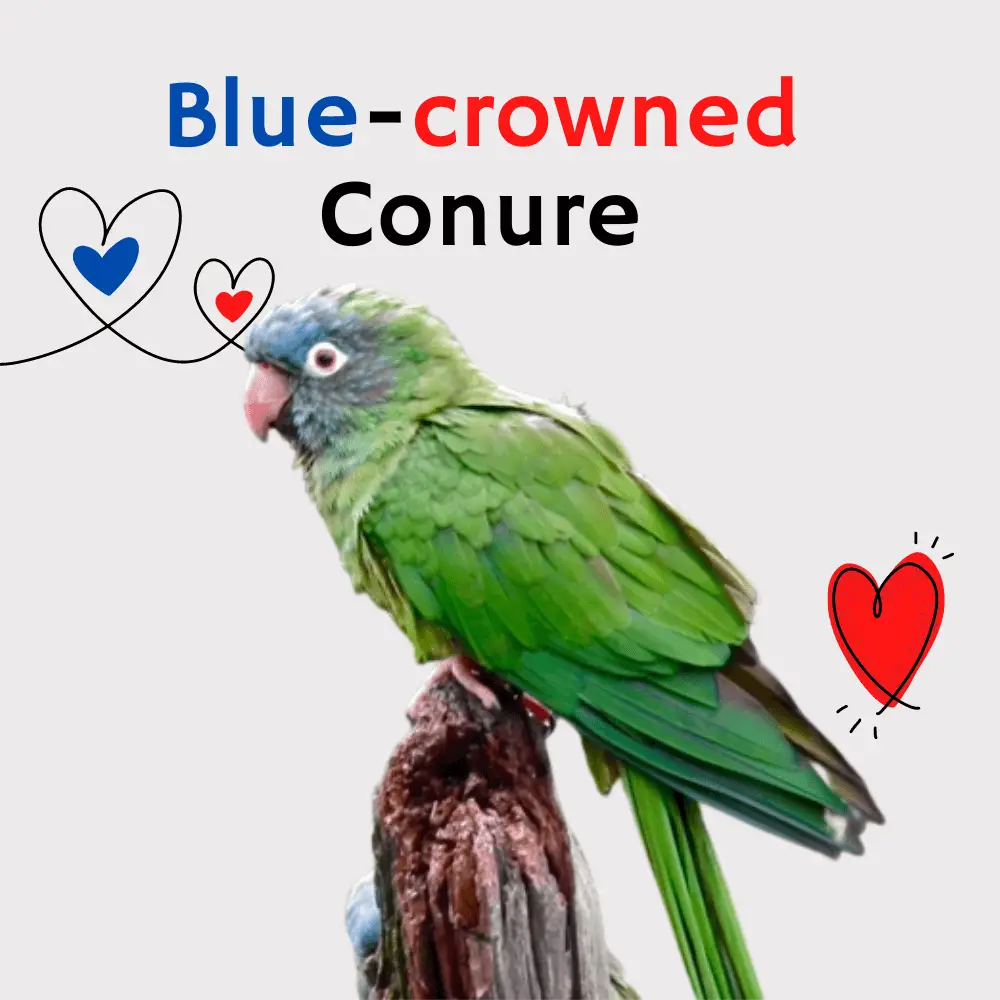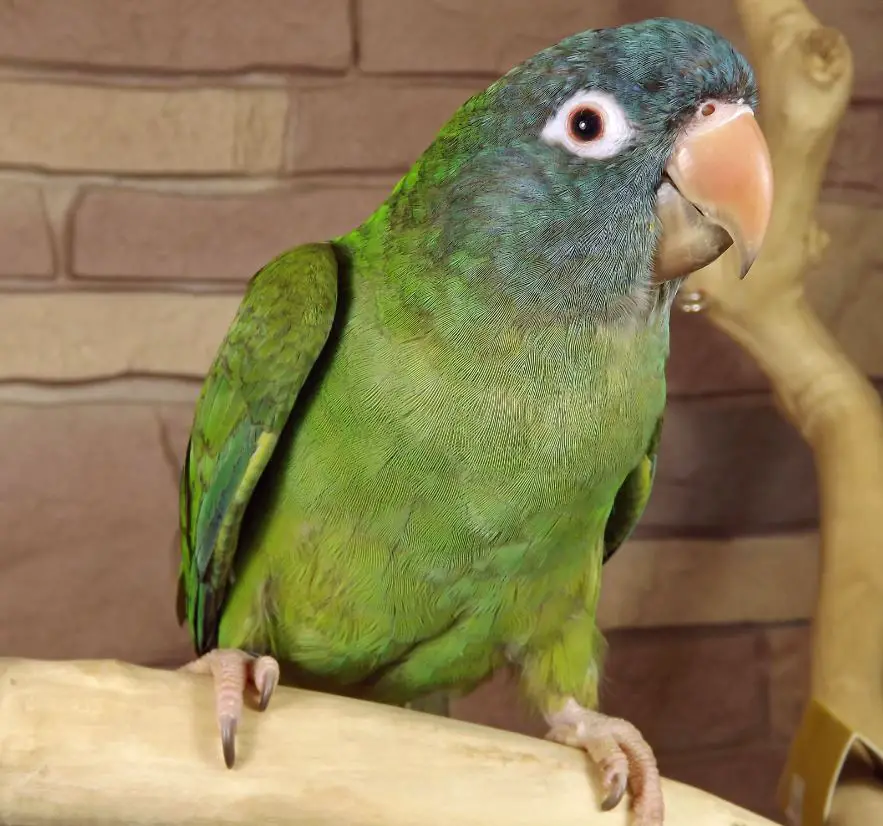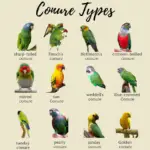
The Blue crowned Conure ( Thectocercus acuticaudatus , formerly Aratinga acuticaudata ) is a species of bird with predominantly green plumage.
Playful, sociable, intelligent, and curious, the blue-headed conure will fit perfectly into any home and will fascinate children.
Taxonomy
According to a phylogenetic study by Remsen et al. (2013), the genus Aratinga is entirely redefined to be monophyletic.
The International Ornithological Congress reflects these changes in its reference classification version 3.5 (2013), and the Blue-headed Parakeet is moved to the genus Thectocercus, which is monotypic.
Blue crowned Conure habitat
The Blue crowned Conure (Thectocercus acuticaudatus) is a parakeet of the order Psittaciformes and the family Psittacidae.
It is one of many other species of conures that inhabit South America, mainly Argentina, the Andes, northern Colombia, and Brazil.
It lives in mountainous and humid areas as well as savannas and maquis. Today part of its population now inhabits Florida.
The Blue crowned Conure measures approximately 37 cm in length with a wingspan of 61 cm and a mass of 200 g. Blue-capped Parakeet’s plumage is green, brighter on the upperparts, and more nuanced on the underparts.
The face of this bird is colored blue, hence the specific name, more or less extended according to age, subspecies, and individual. Bare skin eyering is white.
The upper mandible is reddish-brown with a black tip, the latter color being that of the lower mandible. The legs are pink.
The Best of Avis The Blue Crown Conure
SOURCE: Karla Larsson
Distribution
The Blue crowned Conure now inhabits Florida. The Blue-headed Parakeet is found across much of South America, separated into several different populations, east of the Andes, northeast of Colombia, north of Venezuela, and from northeastern Brazil to northern Argentina. This species is visible up to 2600 meters of elevation. There are feral populations in Florida and southern California.
Blue crowned Conure characteristics

Weight and height:
- Weight: between 170 and 200 g
- Height: 38cm
Blue-crowned Conure Plumage
The Blue-headed Parakeet has plumage predominantly bright green above and paler with shading on the underparts. Its head is blue and the vanes of its tail are orange-red.
General appearance
The Blue-Crowned Parakeet is one of the largest species of the genus Aratinga with a size of 38 centimeters. Its beak is flesh-colored or even light brown, its legs pinkish. Her iris is orange and she has white bare skin orbital circles.
In the juvenile, we do not find blue plumage on the head, where it is limited to the forehead. It is only as it grows that its feathers change to blue.
There is no sexual dimorphism in the Blue-headed Parakeet so only a DNA test can distinguish the sex of this bird.
Blue-crowned Parakeet Character
The Blue-headed Parrot is capable of being very affectionate towards its master if it has been socialized very early, it is very easy to tame. As is the case with many parakeets,
the conure will tend to choose a single master, although it will remain very sociable with other family members. It is quite suitable for children because not at all the type to pinch.
It is a very intelligent, curious, and playful bird. With a play space sufficiently equipped to allow her to stimulate herself mentally, she will have no trouble keeping herself busy. She can even learn a few tricks with a little patience.
Although the Blue-headed Parakeet can pick up a few words, their speaking ability does not excel that of a Gabon Gray or other large parrot. But it will not be uncommon to see her repeat a few words and surrounding noises.
Blue crowned conure talking
SOURCE: Stephanie Wilson
Blue-headed Parakeet Health
Conure Lifespan
The life expectancy of the Mouse Conure is 30 years under the best living conditions.
Common health problems
The Blue-headed conure is subject to diseases that affect all domestic birds. To prevent them, it is important to maintain impeccable hygiene in your cage and not to hesitate to consult a veterinarian as soon as you notice an anomaly.
Here are the most common diseases:
- Beak and feather disease (PBFD), is a serious disease that impairs feather growth and causes consequent loss, and causes the beak to be deformed or even fall off. This disease weakens the bird’s immune system and promotes the appearance of other diseases such as hepatitis. Unfortunately, there is currently no treatment.
- Psittacosis is an infection that affects domestic birds and is also transmissible to humans. It is caused by a microorganism Chlamydia psittaci and the symptoms are tremors, weight loss, shortness of breath, drowsiness, and diarrhea. In humans, the disease brings flu-like symptoms.
- Pacheco’s disease, herpes mostly affects Psittacidae and is often fatal, with symptoms of lethargy, diarrhea, abnormal urine, and anorectic. It is particularly noticeable in the droppings which are more liquid because the virus affects the kidneys.
Blue crowned conure breeders
SOURCE: Belec Eric
Blue crowned Conure Care
Way of life: Blue-headed conure is a dynamic parakeet that needs space to be able to fly. We will then recommend a large aviary fitted out with different toys and branches to allow him to occupy himself in your absence.
The conure is of the independent type and will know how to amuse itself. Otherwise, it is recommended to offer him the largest possible cage with daily outings to stretch his wings or even life in semi-freedom.
Conure Food
In the wild, it feeds on fruits, berries, and grains. In captivity, the Blue-headed Parakeet eats seed mixes for parakeets or parrots found in pet stores.
She will be given fresh fruit or vegetables from time to time as well as ears of millet that she likes to snack on. Do not forget to provide him with a cuttlebone because it contains essential minerals for good health.
Care and grooming
We will remember to make sure that her claws do not grow too much to prevent her from getting hurt. If this is the case, a visit to the veterinarian will allow them to be cut.
The Conure likes to bathe. You can offer him a bath in his cage or in a sink, the important thing is to watch the bird while swimming.
Read more: About other conure types




















